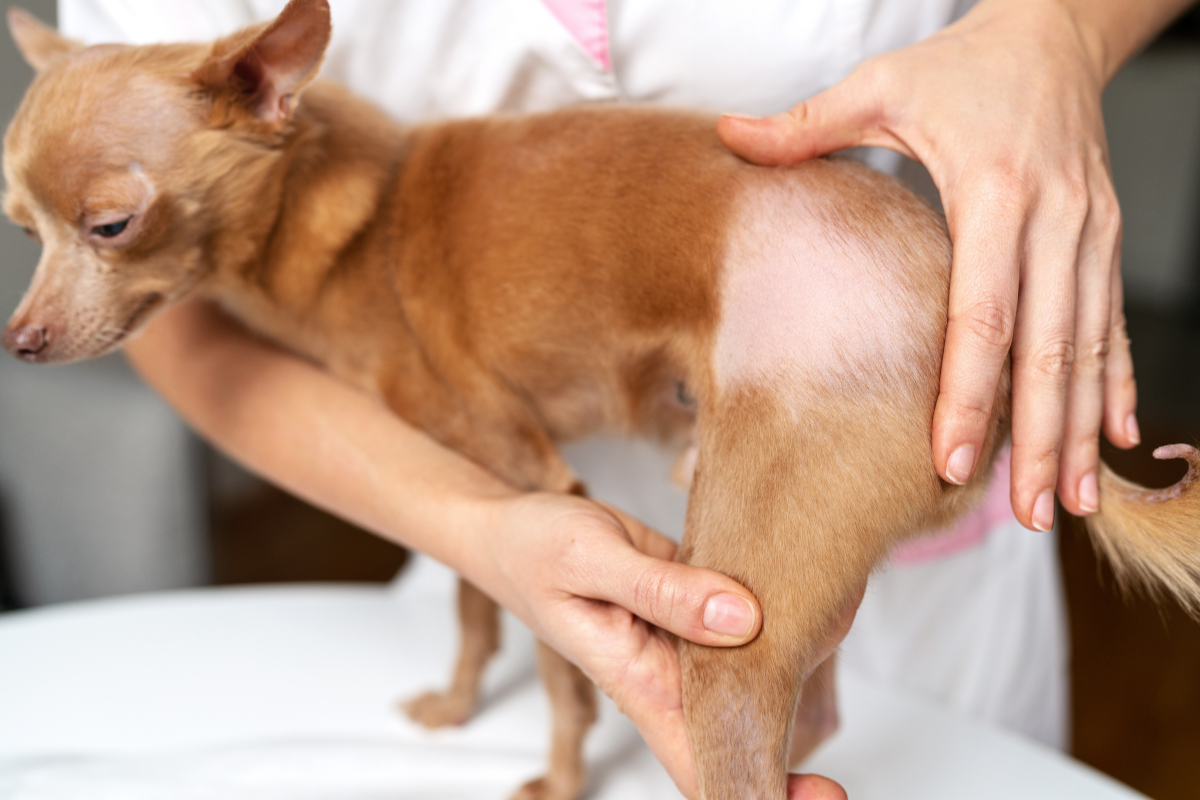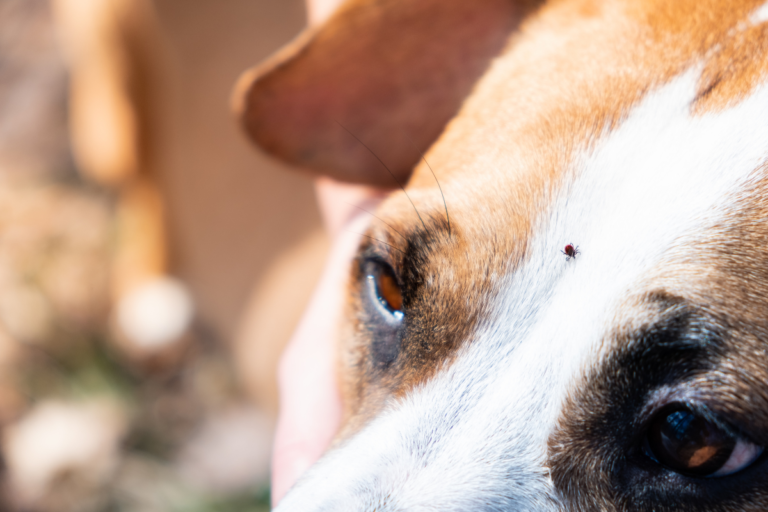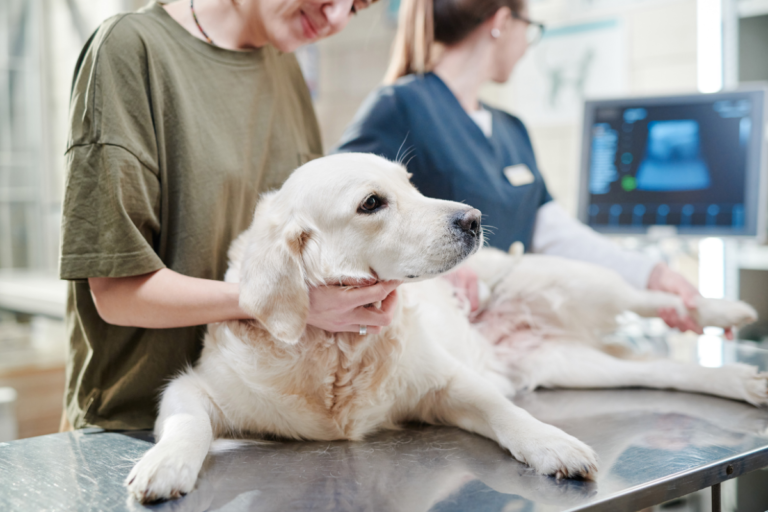Pawsome Protection: Strategies to Combat Deadly Dog Diseases
Understanding Common Dog Diseases
Hey there, dog lovers! Just like us, our four-legged pals can come down with illnesses—knowing what’s out there helps us keep them bouncing around happily.
Why Keeping Diseases Away Matters
Keeping diseases at bay keeps our pooches healthy. You’d be surprised how sneaky those nasties like viruses, bacteria, and fungus can be, spreading from one wagging tail to another, and even to us humans CDC. To keep troubles away, aim for regular shots, tidy surroundings, and those essential vet visits.
Vaccines are our best bud in the fight against some serious stuff like canine distemper AVMA. Shots go a long way in shielding our pups from bad things like distemper and parvovirus.
The Burden of Diseases on Our Dogs
When it comes to diseases, they are no joke. Our doggos can face tough times with things like parvovirus, cancer, and ear problems.
Parvovirus
Parvovirus is like a thief in the night! It sneaks up and can lead to heart issues, bone marrow struggles, pneumonia, or worse. Unvaccinated furballs are easy targets for this nasty intruder Guilford Jamestown Vet.
Cancer
As they age, dogs can face the big C—cancer. Tumors might pop up here and there, and while it’s pretty scary, catching it early means the vet might just cut them out Guilford Jamestown Vet.
Ear Infections
If your dog’s flapping their ear like it’s a new dance craze or scratching like they’re trying to win a prize, they might have an ear infection. Left untreated, it can mean bigger issues like deafness. A quick vet visit often sorts it out Guilford Jamestown Vet.
Keeping an eye on our dog’s health can ward off these and other unwanted visitor diseases. Regular vet check-ups, knowing the signs of ticks on dogs, and keeping their living area spotless are some golden rules we swear by. For more tips to dodge deadly diseases, hop over to our section on dog diseases and symptoms.
Dangerous and Deadly Dog Diseases
We love our dogs, and knowing what health problems they might face is half the battle. Here, we dive into three big, scary issues: Parvovirus, dog cancers, and those pesky ear infections.
Parvovirus
Parvovirus—a nasty bug that’s way too catchable for comfort—can really harm dogs who haven’t had their shots. Young pups are especially vulnerable, and this virus can mess up their heart, bone marrow, and even lead to a quick, tragic end if not stopped in its tracks (Guilford Jamestown Vet). Watch out for these warning signs:
- Bad tummy troubles like vomiting
- Really yucky poop (often with blood)
- Super tired, even for a couch potato
- Playing hard to get with food
Keeping up with vaccines is like giving this monster virus the boot. Curious how to keep Fido safe from more sneaky illnesses? Check out our page on dog diseases and symptoms.
| Symptom | How Often Seen |
|---|---|
| Severe Vomiting | Very High |
| Diarrhea | Very High |
| Lethargy | High |
| Loss of Appetite | High |
Cancer in Dogs
Our furry pals sadly see their odds of getting cancer go up as they grow older. Types of cancer like skin and bone cancer, or lumps like soft tissue sarcomas, are common foes (Guilford Jamestown Vet). Spotting it early can make a big difference. Here’s what might tip you off:
- Lumps or bumps that shouldn’t be there
- Weight loss that’s unexplained
- Appetite changes
- Looking sleepy
Some lumps are “buh-bye” with surgery, but others demand stronger treatments like chemo. Your vet’s the best pal here—so listen to them!
Want a deep dive into dog health matters? Our dog illnesses page offers the scoop.
Ear Infections in Dogs
Ear infections are more common than cookies at a bake sale and can get worse if ignored. Dogs with ear woes might shake their heads, scratch away at those floppy ears, or whine more than usual (Guilford Jamestown Vet). Quick action helps prevent big troubles like going deaf.
| Symptom | How Often Seen |
|---|---|
| Head Shaking | High |
| Ear Scratching | High |
| Whining/Discomfort | Moderate |
| Ear Discharge/Odor | Moderate |
Regular ear cleaning and vet visits are a must to keep infections at bay, especially in dog breeds known for ear troubles. A clean home adds a layer of armor too. Follow our dog health guide for more tips.
Staying alert and taking quick steps can help us shield our pups from these scary doggy diseases. Want to dive deeper? Read up about dogs and ticks and dog seizures.
Prevention and Treatment
Keeping our four-legged buddies safe from nasty doggie diseases ain’t just a walk in the park. It’s about being proactive and responsive. So, let’s chat about jabs, catching signs early, and why the vet’s more than just a dog whisperer.
Importance of Vaccinations
Shots mean the world when it comes to keeping pups away from some seriously scary stuff. Whether it’s the frightening distemper monster, sneaky canine flu, or notorious parvo, vaccines are like mini bodyguards. Core ones, the must-haves for every dog, are their own invisible forcefield against these dreadful bugs.
Core Vaccines for Dogs
| Vaccine | Disease Prevented |
|---|---|
| DHPP | Distemper, Hepatitis, Parainfluenza, Parvovirus |
| Rabies | Rabies |
Keeping your furry pal up to date on shots not only protects them but also keeps the neighborhood safe. Let’s stick to the schedule your vet lays out to keep those booster heroes doing their job.
Early Detection and Intervention
Spotting trouble when it’s just peeking can flip the script on how things play out. Many scary illnesses start quiet, so having your antenna tuned to your dog’s usual antics is no small thing.
| Disease | Early Symptoms to Watch For |
|---|---|
| Heatstroke | Panting like crazy, drooling, sluggish, funky gum color (AVMA) |
| Canine Influenza | Coughing, has the chills, sniffles (AVMA) |
| Parvovirus | Vomiting, diarrhea, acting all tired, not into kibble (AVMA) |
Jumping into action early stops things from snowballing. Regular check-ups and keeping an eagle eye on any odd moves are your best allies.
Veterinary Care for Dog Health
Those visits to the vet’s office? They’re anything but just routine. Through spot-on veterinary care, we don’t just keep our pals current on their shots – we get to the heart of health hiccups and stomp them out before they become a big deal.
Veterinary pros are like having a lifeline, keeping us in the know about zapping deadly diseases and staying ahead with smart tips. Regular vet tests and wellness plans are the ace up our sleeve.
| Service | Benefit |
|---|---|
| Regular Checkups | Spotting problems early, vaccine tunes |
| Emergency Care | Quick fixes for big health scares |
| Specialized Tests | Zeroing in on stuff like Cushing’s Disease and diabetes |
By focusing on prevention, staying on high alert for symptoms, and keeping up with regular vet visits, we gift our beloved pets a shot at a long, vibrant life. For tips on things like Kennel Cough or dog heart failure, check out our deep dive in the dog diseases and symptoms zone.
Specific Deadly Dog Diseases
Canine Distemper
Oh boy, canine distemper ain’t something you want to mess with. It’s a nasty bug that attacks canines’ lungs, tummies, and brains. Puppies under four months without shots? They’re like open targets. Your pooch can catch this virus from another sick dog just by being in the same breath zone. Drool, pee, and snot can do the trick too (AVMA).
Half the dogs who get this don’t make it, and those who do might end up with some funky nerve problems. Look for a nose and paws that feel like sandpaper—that’s the “hard pad” thing you’ve heard about. Treatments are like Band-Aids on a bullet wound because there’s no real fix; you gotta get ’em vaccinated (Autumn Trails Veterinary Center).
Canine Influenza
Dog flu’s a sneaky fella. Your dog might cough, catch a fever, or have a leaky snout, looking like they’ve caught a cold (AVMA). The tricky part is they can pass it on before they even act sick.
There’s a shot for it, but not every pooch needs it. Your vet can give the thumbs-up or down. Watching out for things like grogginess and runny noses can help. Without good care, little problems can snowball into big ones.
Canine Parvovirus
This one’s a gut wrencher—literally. Parvovirus hits the stomach hard, and even tougher on their poop, turning it into a red river of doom. It’s really bad news for unvaccinated pups, especially those under six months. It spreads like wildfire through close contact or touching infested stuff.
Signs? Think barf city, bloody business out back, and your doggo looking like they just can’t even. Time is of the essence. There’s a shot that every four-legged friend should get. It’s on the must-have list. Wanna know more secrets? Visit our scoop on dog diseases and symptoms.
Heatstroke in Dogs
Heatstroke is no walk in the park—it’s deadly, and faster than you’d think. A dog’s body can overheat in no time from big walks on hot days or being left out in blistering weather. You’ll see ’em panting like a steam engine, feeling weak, gums turning weird colors, and, in bad cases, passing out cold (AVMA).
You need to cool them off quick! Shady spots and some cool water—not ice water—help in a pinch. Vet visits are a must to dodge long-term hurt to their insides.
| Symptom | Description |
|---|---|
| Panting | Quick breathin’ to try and cool down |
| Weakened | No juice left in their batteries, can’t stand |
| Gum Color Switcheroo | From red to even whiter shades |
| Collapse | Out like a light, all from the heat |
Get tips on keeping your pooch cool and safe with our dogs and ticks info.
Kennel Cough
Kennel cough’s the doggy version of the common cold, especially popular when dogs hang out in packs, like at pet motels or dog parks (AVMA). Listen for those big, honking coughs, or noses leaking like faucets, mixed with a drop in chowing down.
Getting that kennel cough shot isn’t always a given. Chat with your vet about your dog’s social calendar. A steam machine and a little doggy downtime work wonders for mild coughs. But if it gets gnarlier, antibiotics could be needed.
For more survival tricks against these doggie foes, dive into our preventing deadly dog diseases guide.
Cushing’s Disease in Dogs
Cushing’s disease usually hits our older fur buddies, especially those middle-aged or up in years. It happens when their cortisol levels go through the roof—a hormone from the adrenal glands. When cortisol parties too hard, the immune system takes a hit, making your pup more likely to catch all sorts of nasty bugs and illnesses.
Causes and Symptoms
Most of the time, Cushing’s is due to pituitary or adrenal trouble. Almost 80% to 85% of cases are because of a pituitary gland tumor gone rogue, while the rest (15% to 20%) come from tumors crashing the adrenal glands’ party.
Your dog might start showing signs that aren’t loud at first but can sneak up, like:
- Drinking and peeing like there’s no tomorrow
- A belly that’s getting a bit too cozy and round
- More than usual hunger
- Bald spots stealing their fur
- Skin getting paper-thin
- Muscles going on strike
- Just plain tired most of the time
For more on what to watch out for in your dog’s health, swing by our piece on dog diseases and symptoms.
Diagnosis and Treatment Options
Vets usually get their detective hats on with a mix of tests to figure this one out. Blood tests help suss out if Cushing’s is the culprit and whether it’s due to pituitary or adrenal issues. Sometimes, an ultrasound plays the sleuth to spot those adrenal tumors (FDA).
| Diagnostic Method | What It Does |
|---|---|
| Blood Tests | Checks hormone levels to see if Cushing’s is on board. |
| Ultrasound | Scans for adrenal gland tumors. |
As for treatments, options range from meds to possible surgeries. Vetoryl (trilostane) is a popular choice, managing both pituitary and adrenal versions by trimming down cortisol levels. But it’s not without hiccups like appetite loss, puke fests, tummy troubles, and weakness (FDA). Anipryl (selegiline) is another go-to for pituitary tumors.
Let’s break down some of the usual meds:
| Medication | Used For | Watch Out For |
|---|---|---|
| Vetoryl (trilostane) | Both pituitary and adrenal Cushing’s | Appetite dip, vomiting, diarrhea, weakness |
| Anipryl (selegiline) | Pituitary troubles | Slight tummy unease, tiredness |
| Lysodren (mitotane) | An old-timer for Cushing’s | Serious side effects, potential adrenal damage |
Keeping our pups safe from the likes of Cushing’s means regular vet visits and staying alert to any odd symptoms for early nipping in the bud. For tips on keeping your pooch unharmed, go through our guide on preventing deadly dog diseases.
The more we know, the better we can hang onto a future full of wagging tails and happy snoots. Check out our resources on doggy health stuff like dog heart disease, dog diabetes symptoms, and lots more to keep your four-legged family member in tip-top shape.
Protecting Your Dog
Keeping our pups safe and in tip-top shape involves dodging those sneaky diseases that could spell trouble. We’re chatting about how to fend off these nasties, why trips to the vet are like a superhero’s shield, and how to make your home a haven.
Preventing Deadly Dog Diseases
Here’s the play: stop the bad stuff before it starts. Keeping pooches safe from scary stuff like diseases is all about being on the ball. Check this out:
- Vaccination: Teeny needles, big difference! Shots for things like rabies, distemper, and parvo are non-negotiable. These vaccines are like your dog’s personal force field, keeping the really bad bugs at bay.
- Hygiene: Cleanliness is next to pawsomeness! Parvo is a real killer for unvaccinated dogs, but keeping the area around your dog clean (psst… pick up that poop) makes it hide under the rocks.
- Avoiding Bad Spots: Dog park? Fun! But watch out – diseases like leptospirosis love murky puddles. Keep an eye when your canine is splish-splashing around (Animal League America).
Regular Checkups and Vaccinations
Regular vet check-ins are like routine car maintenances, but for your four-legged buddy. Here’s the scoop:
- Early Spotting: Vets are the eagle eyes who catch diseases early, helping to squash the threat before it grows. Finding problems early means our furry friends have a shot at fighting things like canine disease.
- Vaccine Updates: Stay current with those jabs! They’re your passport to keeping nasties like rabies at bay and staying on the right side of the law (AVMA).
- Everyday Care: Vets serve as your pet’s nutrition and wellness coach—keeping their body fluids and electrolytes balanced to help fend off diseases like dog heart disease.
| Disease | Vaccine Required | Frequency |
|---|---|---|
| Rabies | Yes | Yearly, or every three years (depends on local rules) |
| Distemper | Yes | Every 3 years (post initial jabs) |
| Parvovirus | Yes | Every 3 years (after the first series) |
| Leptospirosis | Yes | Yearly |
Ensuring a Safe Environment
Creating a danger-free zone for your dog is another way to keep them thriving:
- Stay Secure: Your dog’s crib should be free from dangerous odds ‘n’ ends. Sharp stuff, toxic plants, and chemical nasties can be dealt with so you’ll avoid nasty surprises.
- Safe Hangouts: While socializing is key, always scope out the crowd. Beware of the doggies with questionable histories or no vaccines. Plus, keep an eye out for symptoms of ticks in dogs and creepy-crawlies.
- Good Grub and Play: Healthy munching and regular romp sessions boost their immune system and fend off the bad guys. Keeping an eye on their weight helps, too, so you’re not dealing with an overweight dog.
By tagging these tips onto your everyday doggy care, you’re setting up your pooch for a lively, illness-free life. Want more on keeping your best bud healthy? Check out info on dog diabetes symptoms and dog gum disease.






